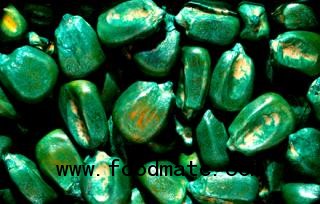
This year's test plot data will likely be far from the most reliable, mostly because of the drought that ravaged much of the U.S. this growing season. So, how do you make use of that hit-and-miss data in an informed seed purchase decision?
"Test plot information this year can still be very useful but take precautions. Results from single on-farm strip tests should not be used to make a decision on adoption of a treatment or variety," says Ohio State University Extension corn specialist Peter Thomison. "Even replicated data from a single test site should be avoided, especially if the site was characterized by abnormal growing conditions."
How much you use this year's test plot data you use in your seed-buying decisions depends a lot on the traits you're looking for. Obviously, drought tolerance will show up fairly well in this year's tests. But, even that's not always as cut-and-dried as it might seem in a year when a single weather variable dominated, like this year's drought.
"If one assumes that the varied stress conditions affected test plots uniformly within a field, then interpretation of test plot data becomes an issue. This issue can be especially relevant when evaluating results of a hybrid and cultivar performance trials severely affected by drought," Thomison says. "Did a hybrid yield well under drought stress because it genuinely possesses some drought resistance or because it 'escaped' the impact of high temperatures and drought by flowering before or after the worst of the stress? If it was the latter, then the hybrid's superior performance may be of limited value under different drought conditions in the future."
It's because of this potential variability that some farmers say they've avoided using plot data from this year's crop altogether. "I normally refuse to order much until after I can look at how our stuff yielded, but I'm not going to pay much attention to this year and call it a hopeful rare one," says Agriculture.com Farm Business Talk frequent contributor infire.
But, if you don't want to rule out this year's yield data in your seed-buying decisions for next year, you can still factor it in. Just do so in a different context, says Iowa State University Extension corn agronomist Roger Elmore. This year's context should partially comprise the wide window of yield variability.
"Some of these fields are pulling in 220 [bushels/acre] and some pulling in 40. Look at the hybrids you're aiming at and how it does in both environments. This would tell you how stable a variety is across diverse environments," Elmore says. "Look at the good, bad and the ugly. You really want one that performs best in all environments."
Thomison and Elmore agree that not every test plot around the country will yield irregular results. Just make sure you know what conditions the plot faced during the growing season and whether or not the results will reflect the extremes or the norm.
"Test plot information this year can still be very useful but take precautions. Results from single on-farm strip tests should not be used to make a decision on adoption of a treatment or variety," Thomison says. "Even replicated data from a single test site should be avoided, especially if the site was characterized by abnormal growing conditions."
Elmore recommends the following tips to get the most out of this year's yield data in making your seed-buying decisions:
Look at how hybrids performed in both good and bad environments. "This will tell you how stable it is across diverse environments," he says.
Consider at least some stress tolerance. Though 2012 was a mostly anomalous year, this is typically a good trait to include in just about every year. "Even in a 'normal' year, we have stretches when it's hot and dry, so it's good to consider hybrids that are more stress-tolerant," Elmore says.
Take a wide range of conditions into account. "I'd probably want some of the ones that do well in best environments, but the majority would be the ones that year-in and year-out, good or bad location, do just fine," he says. "They may not be the stars, but they don't fall apart. You put the high performers in poor environments, they'll fall apart."
Don't assume weather conditions will improve next year and select hybrids that won't perform well under weather similar to 2012. While it's important not to only look at this year's yield data, it's just as important not to assume Mother Nature will treat you any differently next year. "You've got to keep in mind that these dry conditions might persist," Elmore says. "I would pay very close attention to the long-term forecasts in the next few weeks and over the winter. If we don't have good soil moisture recharge by mid-winter, what are the chances we have that in March? I'm going to listen closely to what the weather forecasters are saying."
In the end, you'll likely need to at least take test plot data (whether this year's or from past seasons) into consideration to some degree in making your seed-buying purchase decisions. It's important to keep each test plot -- and its performance across more than just 1 growing season -- in the right perspective.
"Use test plot data from multiple sites (and preferably from at least 2 years of testing) and inquire about the weather patterns and conditions associated with the results," Thomison says. "Look for consistency in a product or variety's performance across a range of environmental conditions."
Adds Elmore: "There will be a lot more conservative approaches to buying hybrids for next year."






